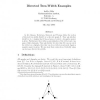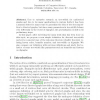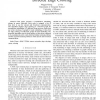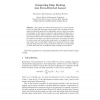1736 search results - page 41 / 348 » The rank-width of Directed Graphs |
JCT
2007
15 years 14 days ago
2007
In [1] Johnson, Robertson, Seymour and Thomas define the notion of directed tree-width dtw(D) of a directed graph D. They ask whether dtw(D) ≥ k − 1 implies that D has a have...
TCS
2008
15 years 14 days ago
2008
Transitive signatures allow a signer to authenticate edges in a graph in such a way that anyone, given the public key and two signatures on adjacent edges (i, j) and (j, k), can c...
111
click to vote
MFCS
2005
Springer
15 years 6 months ago
2005
Springer
Due to extensive research on tree-width for undirected graphs and due to its many applications in various fields it has been a natural desire for many years to generalize the idea...
ICC
2007
IEEE
15 years 6 months ago
2007
IEEE
— This paper presents a transmission scheduling scheme in sensor networks. Each node is assigned a list of time slots to use for unicast and broadcast communication. The algorith...
GD
2006
Springer
15 years 4 months ago
2006
Springer
Abstract. The typical use of force-directed layout is to create organiclooking, straight-edge drawings of large graphs while combinatorial techniques are generally preferred for hi...




